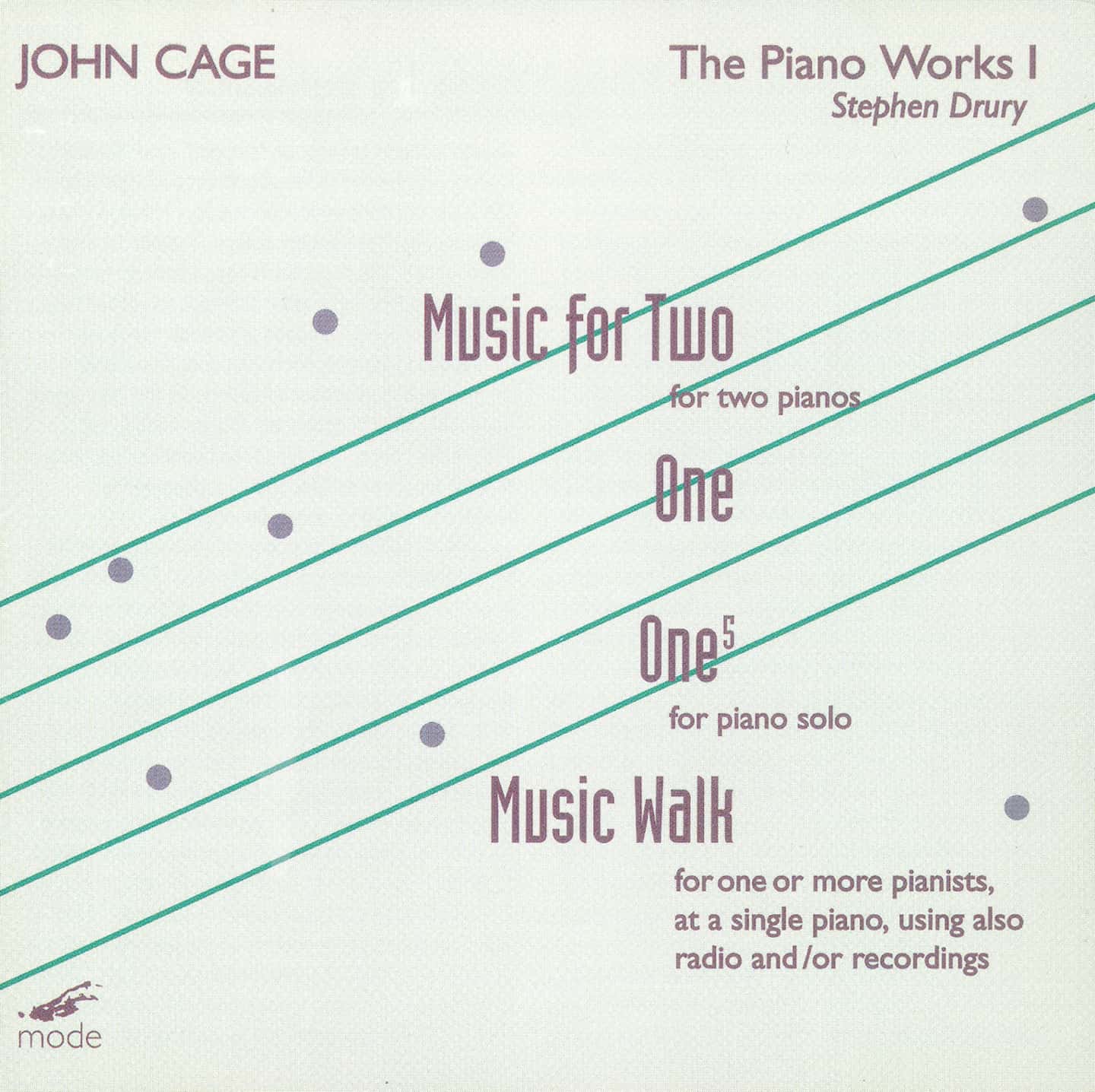Cage Edition 13: The Piano Works 1
Stephen Drury, piano
1. MUSIC FOR TWO (1985) *
for two pianos
2. ONE (1987) *
3. ONE5 (1990)
for piano solo
4. MUSIC WALK (1958)*
for one or more pianists, at a single piano,
using also radio and/or recordings
* First recordings
New music specialist Stephen Drury’s first of a series of piano recordings for Mode mixes some of Cage’s later works withhis 1958 Music Walk.
From his earliest works, Cage searched for ways to free sounds to exist independently of each other, emphasizing the uniqueness of each sound –struggling to avoid the idea of their relationships, and ultimately, melody. But hearing this collection brings to mind Christian Wolff’s comment to Cage that “nomatter what we do, it ends up being melodic”. The various and unrelated sounds in Music for Two, One and Music Walk subversively conspire to create anew kind of melody, but in a greatly distended time scale. Perhaps only in One5, Cage’s last work for piano, does he manage to free himself frommelody once and for all — its sparseness is a work of commanding stillness.
Music for Two achieves its unique sound by producing sustained pitches from the piano strings “bowed” with nylon fishing line.
Music Walk, dating about forty years earlier, consists of a graphically notated score with transparent overlays, allowing the performer(s) to independentlycreate their parts which call for sounds to be produced in and around the piano, on radios, or on auxiliary instruments (including their own voices). The ensuingtraffic of sounds results in a cooperative piece of theater.
Reviews
Musik, die eigentlich nicht zu bannen ist,
John Cage: Music for Two, One, Music Walk, One 5 (Drury) Mode 47;
Sonatas & Interludes (Vandré) Mode 50;
Concerto for Prepared Piano and orchestra, Fourteen (Drury), Klavierkonzert (Tudor) Mode 57;
The Seasons, Cheap Imitation, ASLSP (Drury) Mode 63
Längst ist John Cage nicht mehr das Enfant terrible der Neuen Musik, längst nicht mehr der belächelte Provokateur, sondern als Wendepunkt der Musik- und Kunstauffassung unseres Jahrhunderts, wichtiger noch als Schönberg, im Museum der Musikgeschichte verwahrt. Sechs Jahre nach dem Tod sind Cages Werke fest in den konzertsälen etabliert – dort also, wo sie eigentlich hingehören. Nicht nur hatte Cage, der selbst keine Stereoanlage besass, ein gebrochenes Verhältnis zu Musikaufnahmen überhaupt, auch verweigern sich seine indeterminierten Kompositionen der akustischen Konservierung… Dennoch füllen CDs von Cage meterweit die Regale gut sortierter Plattenläden… Die New Yorker Mode Records haben bisher vier Klavierplatten mit Stephen Drury, Philipp Vandré und David Tudor im Programm… Vandré spielt [die Sonatas & Interludes] auf dem 1948 von Cage verwendeten kleinen “Steinway O” und kann daher sicher sein, dass die vorgeschriebenen absoluten Masse für die Orte, an denen die Gummibänder, Schrauben und Plastikstückchen zwischen den Saiten zu klemmen sind, tatsächlich eingehalten werden. So entsteht ein verhältnismässig herber Klang, der Vandré zu einer eher zurückhaltenden Gestaltung angeregt haben mag, deren Spannung haupsächlich in der individuellen artikulatorischen Differenzierung der Klänge liegt.
— Volker Straebel, Der Tagesspiegel, 9. August 1998
Releated Resources:
Stephen Drury on Mode:
John Cage: Orchestral Works I (mode 41)
John Cage: Volume 23: The Works for Violin 4 (mode 100)
John Cage on Mode:
John Cage Profile/Discography
Stephen Drury Profile
Stephen Drury Website

